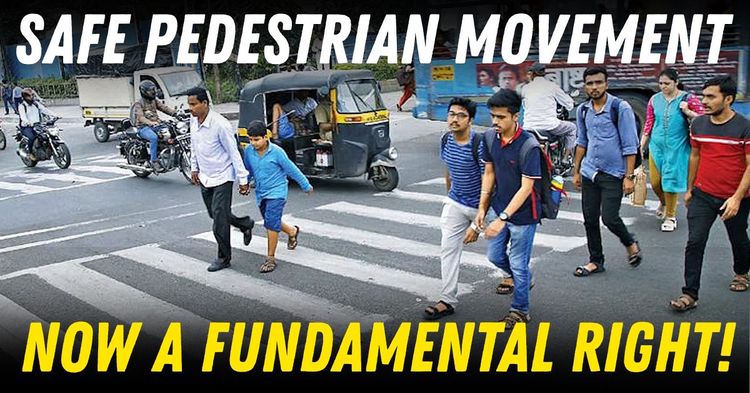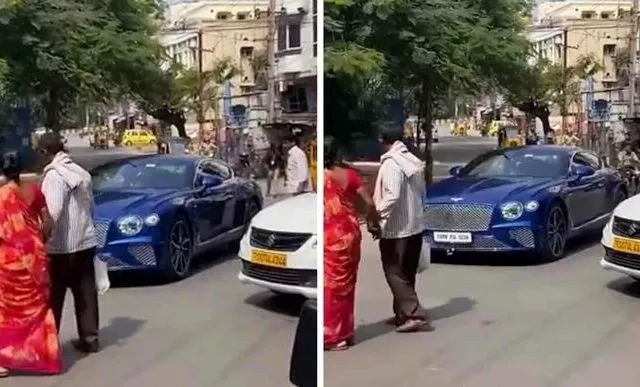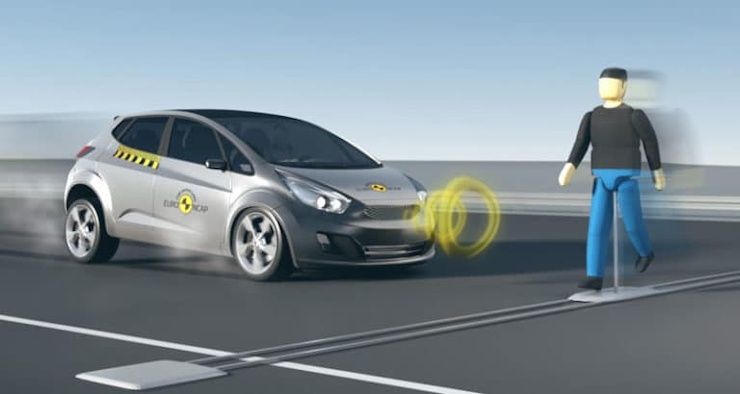Safe Pedestrian Movement Is A Fundamental Right: Supreme Court Of India


In a landmark judgment, India’s Supreme Court has ruled that safe pedestrian infrastructure is a fundamental right protected under Article 21 of the Constitution, which guarantees the right to life. The court directed all states and union territories to formulate comprehensive guidelines within two months to ensure unobstructed, disability-friendly footpaths. This decision addresses the alarming rise in pedestrian fatalities, which account for nearly 20% of India’s annual road deaths.

The bench of Justices Abhay S Oka and Ujjal Bhuyan emphasised that properly designed footpaths free from encroachments are non-negotiable for urban planning. The ruling stemmed from a public interest litigation highlighting how poor infrastructure forces pedestrians onto roads, exposing them to preventable risks. The court reiterated that municipal authorities must prioritise pedestrian safety, noting that existing footpaths often lack basic accessibility features like ramps and tactile tiles for visually impaired individuals.
States have been instructed to submit compliance reports within six months, with the Centre tasked to establish a National Road Safety Board. This directive builds on earlier high court orders from Mumbai and Bengaluru, which had flagged rampant footpath encroachments but saw limited implementation.
Recent data reveals a grim reality: over 1.5 lakh pedestrians died in road accidents between 2018 and 2022, averaging 32,825 fatalities annually. In cities like Mumbai, pedestrians constitute over half of all road accident victims. These figures underscore a systemic neglect of footpaths, with urban planners often prioritising vehicular movement over walkability.
Common issues include footpaths blocked by street vendors, parked vehicles, or illegal constructions. In Guwahati, for instance, raised building plinths and unauthorised ramps have turned footpaths into obstacle courses. Design flaws exacerbate the problem: many footpaths are narrower than the recommended 1.8-metre width for residential areas, forcing pedestrians onto busy roads.

Automakers have begun integrating pedestrian safety features like acoustic alerts in hybrid vehicles and automatic emergency braking systems. However, industry experts note that global safety technologies often fail to account for India’s unique challenges, such as pedestrians abruptly stopping mid-crossing or jaywalking due to inadequate infrastructure.
Road safety advocates stress the need for mutual respect among road users. A prevalent “me first” attitude among drivers and pedestrians alike contributes to chaos, with many ignoring traffic signals or refusing to yield right of way. Simple measures like maintaining eye contact with drivers while crossing and avoiding sudden movements could reduce accidents significantly.
Community-led efforts in cities like Bengaluru demonstrate the potential for change. Resident groups in Bellandur have proposed model footpaths designed not just for safety but to encourage walking as a sustainable commute option. These blueprints include dedicated zones for pedestrians, street furniture, and vendor spaces to prevent encroachments. Such initiatives, coupled with judicial pressure, could catalyse nationwide reforms.
The Supreme Court’s order has reignited debates about equitable urban planning. While the directive is a critical step forward, its success hinges on collaboration between civic bodies, law enforcement, and citizens. Removing encroachments, enforcing design standards, and raising public awareness about pedestrian rights will be key to transforming this legal victory into tangible safety improvements.
The judgment implicitly acknowledges that walkability is not a luxury but a necessity for India’s rapidly urbanising population. With over 34% of urban trips made on foot, the absence of safe pathways disproportionately affects low-income groups who rely on walking for daily commutes. The ruling also aligns with global trends where cities from Barcelona to Bogotá [latter is not in a rich country] have redesigned streets to prioritise pedestrians and cyclists over cars.
As authorities draft new guidelines, lessons can be drawn from Hyderabad’s recent footpath renovation project, which incorporated input from disability rights groups. Features like gradual kerb slopes, tactile paving, and regular maintenance protocols offer a replicable model. However, sustained political will and budgetary allocations will determine whether these changes endure beyond headlines.
We believe that the Supreme Court’s intervention serves as a reminder that constitutional rights extend beyond abstract principles, they must translate into lived realities. For millions of Indians, that reality begins with a simple premise: the ability to walk safely.